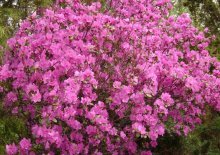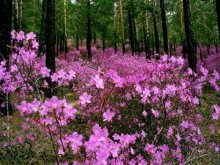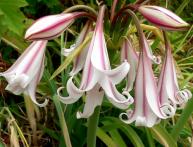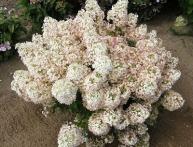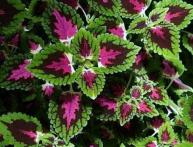When will wild rosemary bloom? All about the plant
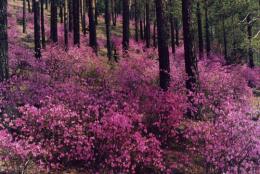
Translated from Greek, “Ledum” is translated as “incense”. If we take Old Church Slavonic as a basis, then “bagulit” means “to poison.” There are two versions of wild rosemary. This is what people call wild rosemary and rhododendron. Each of these plants is popularly called wild rosemary.
Content:
Wild marsh rosemary
This type of wild rosemary belongs to the heather family. From this family, plants belonging to wild rosemaries are distinguished:
- Marsh wild rosemary
- Greenlandic
- large-leaved
Marsh rosemary is a shrub that is evergreen. The height of the shoots reaches 150 centimeters. The shoots are covered with pubescence of a “rusty” color. Individual bushes reach one meter in diameter. The curled, lanceolate, dark, shiny leaves of the shrub are curled down.
This wild rosemary blooms en masse at the end of May. The flowers are beautiful, white, sometimes light pink, in umbels of many flowers. During flowering, essential substances are released into the atmosphere. These substances have a toxic effect on the human body. During flowering, their concentration in the air reaches its peak. The plant is completely poisonous, not just the flowers.
Being near wild rosemary for several minutes, a person begins to experience severe headache, nausea, and dizziness. You can lose consciousness if you inhale the aroma of wild rosemary for too long.
However, It's not just the plant that's poisonous, even honey collected from these flowers is poisonous. So, before you start growing this heather for decorative purposes, you need to think about the consequences. Even animals experience exhaustion and weakness after prolonged contact with bushes, as there is multiple evidence from professional hunters. After flowering until mid-June, the period of seed ripening begins.
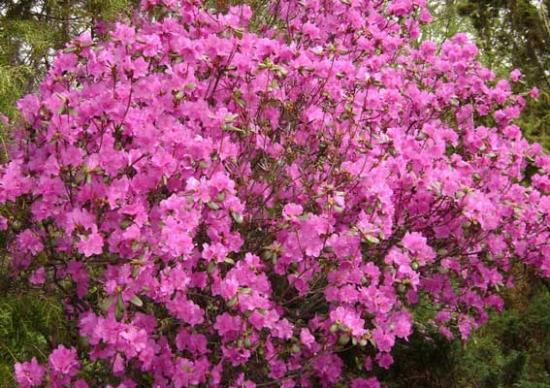
The capsule-shaped fruit ripens in August. The plant reproduces in two ways: by root shoots and seeds. Ledum is winter-hardy in any conditions. However, shoots on open ground that are not covered with snow die.
The shrub, growing in non-snowy places, has a beautiful and even crown shape, as if trimmed by a master. The inflorescences at the edges are larger than in the center. But. Flowering occurs simultaneously.
Mass flowering of marsh and other wild rosemaries of the heather family does not occur every year, but once every 4 years. This is due to the long growing season.
Ledum reproduces well by seeds in open forests and areas without moss. Grows slowly in any conditions. The lifespan of the root system is not much more than thirty years. But in mossy, marshy areas, wild rosemary does not survive for long. It is gradually being pulled into the thickness of the moss due to the constant growth and rise in the level of the swamp. As a result, the root system finds itself in conditions deprived of oxygen and in very humid conditions.
Then the roots die off, turning into a thick layer of swamp and peat, and adventitious surface roots appear on living shoots (if any). If the roots are not covered with snow during the winter, the plant will not survive.
When wild rosemary blooms, on a bright moonlit night the landscape appears enchanting and magical. Flowering bushes wild rosemary, enveloped in an alluring, deceptive and so pleasant aroma, attracts you. I immediately remember fairy tales about ominous and beautiful swamps, undines, revived drowned women, forest dwellers and magic.
Habitats
The most common is marsh wild rosemary, found everywhere in different parts of the world, where coniferous forests, mountain streams, forest-tundra, mountain thickets, and dwarf cedar forests are located. There is a lot of wild rosemary in the swamps of Belarus.
This type of wild rosemary is often called “hemlock” and “bedbug”. The thing is that this plant has long been used as a means of fighting bedbugs, thanks to its pungent smell of flowers.
Useful properties of wild rosemary
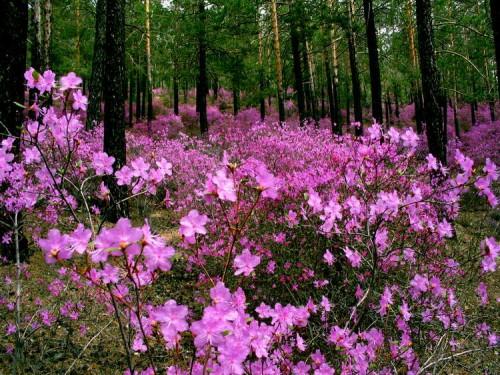
Despite poisonous properties, wild rosemary is still a medicinal plant. The beneficial properties of this heather were first mentioned in treatises dating back to the 12th century AD. It was in Denmark and Sweden that wild rosemary was first used for medicinal purposes.
Then this plant was used to treat gout, arthritis, dysentery, pulmonary diseases, bronchitis, skin diseases, using young shoots or flower decoctions. Ledum began to be used as a medicine in Russia in folk medicine in the 17th century. Then a book-guide “On the benefits of stinking heather” was written.
The medicinal properties of the plant are ensured by the high content of essential oils in the flowers. A decoction of these dangerous inflorescences has bactericidal and mucolytic effects. It acts as an expectorant and bronchodilator.
Since ancient times, diseases of the liver and kidneys, heart and lungs were treated with a decoction of wild rosemary. Ledum has been and is used in the treatment of influenza, acute respiratory infections, acute respiratory viral infections, rheumatism, and scrofula. The decoction reduces blood pressure.There is another direction in medical use - cure for worms.
Ledum has been used since ancient times during epidemics, as broad-spectrum antiseptic. This stopped many disasters and epidemics in the Middle Ages. The decoction was not only taken internally, but was used in the form of baths and washes.
The leaves and shoots of wild rosemary are used as a sedative and hypnotic. And an infusion of oil is an excellent remedy for a runny nose. An ointment based on pork or goose fat is used to rub sore joints for rheumatism. The same ointment is used to treat scabies.
In ancient times, wild rosemary was added to beer instead of hops; this enhanced the intoxicating effect. Often, “unscrupulous” owners of a tavern, pub or bar used wild rosemary decoction to further intoxicate clients in order to rob them and take them away from their establishment.
Now wild rosemary is widely used in scientific medicine. It is used for enterocolitis and chronic bronchitis. The antitussive drug Ledin, produced from wild rosemary, is a good remedy for the treatment of whooping cough.
Ledum is used in veterinary medicine, with the same indicators as in medicine. This plant is also used in pest control. It is used in the fight against moths, cockroaches, rodents, ants, bedbugs, and mosquitoes. Ledum is a wonderful plant, poisonous and useful at the same time.
A few beautiful songs are dedicated to this wonderful plant:
Interesting information about the vegetable garden

